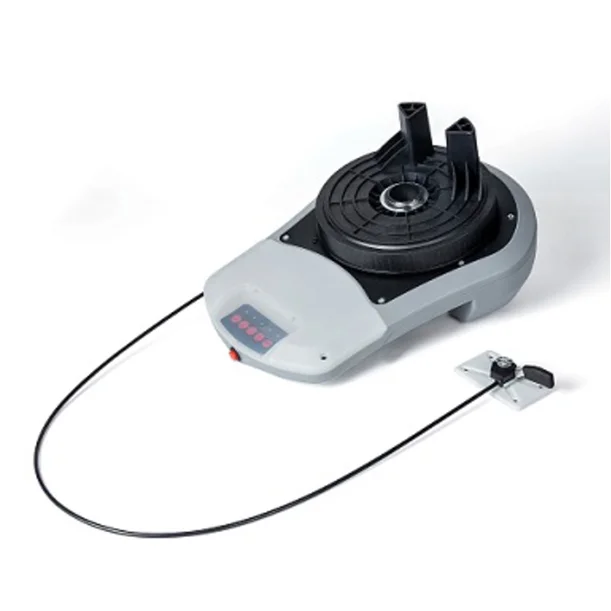In the realm of electronics, diagnosing circuit problems is akin to solving a complex puzzle. Whether you are an experienced engineer or a hobbyist, understanding the intricacies of circuit diagnostics is crucial for effective troubleshooting. This article delves into advanced techniques and methodologies for diagnosing circuit issues, ensuring you are equipped with the knowledge to tackle even the most elusive problems.
Understanding Circuit Fundamentals
Before diving into diagnostics, it is essential to grasp the fundamental principles of circuits. A circuit comprises various components such as resistors, capacitors, inductors, diodes, and transistors, all interconnected to perform specific functions. Each component has its unique characteristics and behaviors, which can significantly affect the overall performance of the circuit. Familiarity with Ohm's Law, Kirchhoff's Laws, and the behavior of AC and DC circuits is vital for effective troubleshooting.
Step 1: Visual Inspection
The first step in diagnosing circuit problems is a thorough visual inspection. This process involves examining the circuit board for any obvious signs of damage, such as burnt components, broken traces, or loose connections. Pay close attention to:
- Component Integrity: Look for discoloration, swelling, or physical damage to components.
- Solder Joints: Inspect solder joints for cracks or cold solder connections that may lead to intermittent faults.
- Trace Damage: Identify any broken or corroded traces that could disrupt the flow of electricity.
Step 2: Utilizing Diagnostic Tools
Once the visual inspection is complete, the next step is to employ diagnostic tools to gather quantitative data about the circuit's performance. Some essential tools include:
- Multimeter: A versatile instrument used to measure voltage, current, and resistance. It can help identify faulty components by checking their specifications against expected values.
- Oscilloscope: This tool allows you to visualize electrical signals over time, making it invaluable for diagnosing issues in AC circuits or digital signals.
- Logic Analyzer: For digital circuits, a logic analyzer can capture and display multiple signals simultaneously, aiding in the identification of timing issues or logic errors.
Step 3: Systematic Testing
A systematic approach to testing is crucial for effective diagnosis. Start by isolating sections of the circuit to identify the faulty area. This can be achieved through:
- Divide and Conquer: Break down the circuit into smaller sections and test each one individually. This method helps pinpoint the exact location of the fault.
- Signal Tracing: Follow the signal path through the circuit, checking for expected voltages and waveforms at various points. This technique can reveal where the signal is lost or distorted.
Step 4: Analyzing Circuit Behavior
Understanding how the circuit is supposed to behave under normal conditions is essential for effective diagnosis. Compare the actual performance with the expected behavior by:
- Referencing Schematics: Use circuit schematics to understand the intended functionality and identify potential failure points.
- Simulating Circuit Conditions: If possible, use circuit simulation software to model the circuit's behavior under various conditions. This can help identify discrepancies between expected and actual performance.
Step 5: Identifying Common Faults
Certain issues are prevalent in circuit diagnostics. Familiarizing yourself with common faults can expedite the troubleshooting process. Some typical problems include:
- Short Circuits: These occur when unintended paths allow current to bypass components, often leading to overheating or component failure.
- Open Circuits: A break in the circuit path can prevent current flow, resulting in non-functional components.
- Component Failure: Capacitors, resistors, and transistors can fail due to age, heat, or electrical stress, leading to circuit malfunctions.
Step 6: Documenting Findings
As you diagnose the circuit, it is essential to document your findings meticulously. Keeping a detailed record of tests performed, measurements taken, and observations made can provide valuable insights for future troubleshooting and help others understand the diagnostic process.
Conclusion
Diagnosing circuit problems is a multifaceted process that requires a blend of theoretical knowledge and practical skills. By following a systematic approach—starting from visual inspection to utilizing advanced diagnostic tools and analyzing circuit behavior—you can effectively identify and resolve circuit issues. As technology continues to evolve, staying updated with the latest diagnostic techniques and tools will enhance your troubleshooting capabilities, ensuring you remain at the forefront of the electronics field.



More Stories
Hear Life Clearly: The ARKON 2.4G Wireless Headset for Seniors DH210
Portable 4G MiFi Wireless Hotspot: The Ultimate Buyer’s Guide for Reliable On-the-Go Connectivity
Top 5 Benefits of Choosing JK FHD-iPhone15plus Screen for High-Quality Repairs